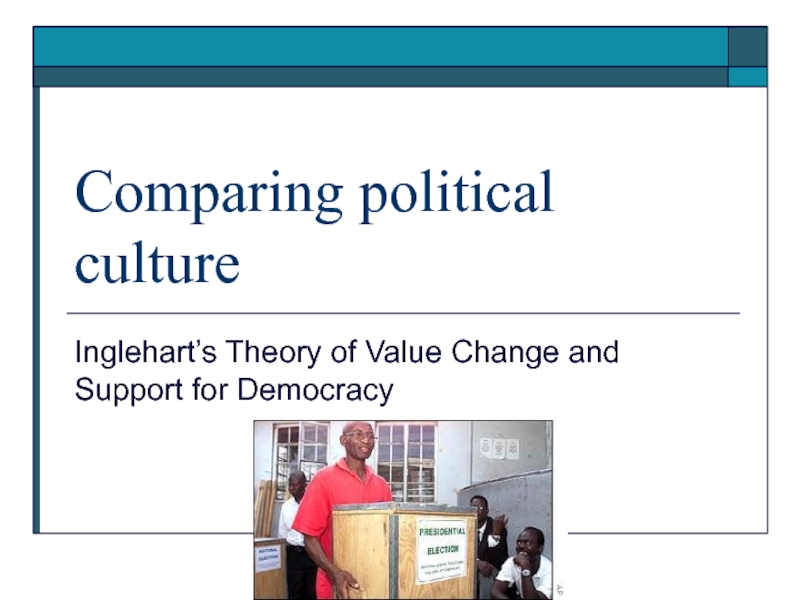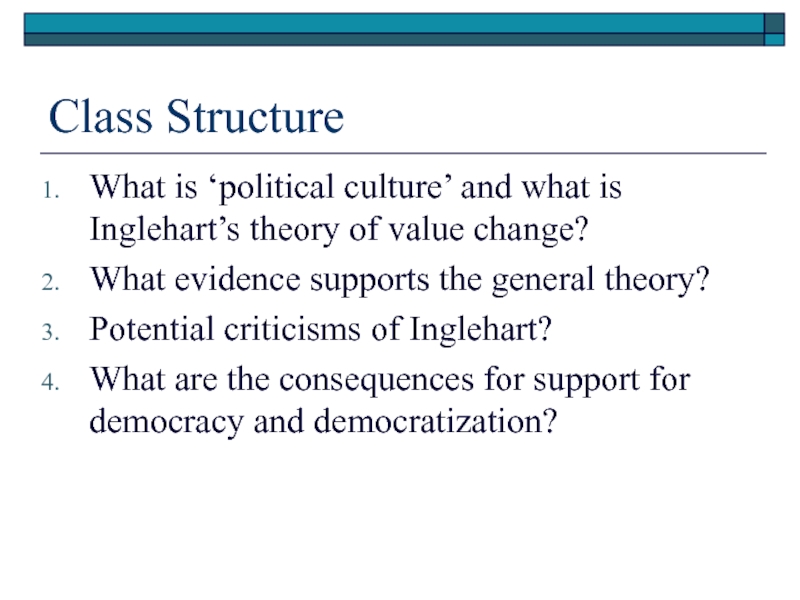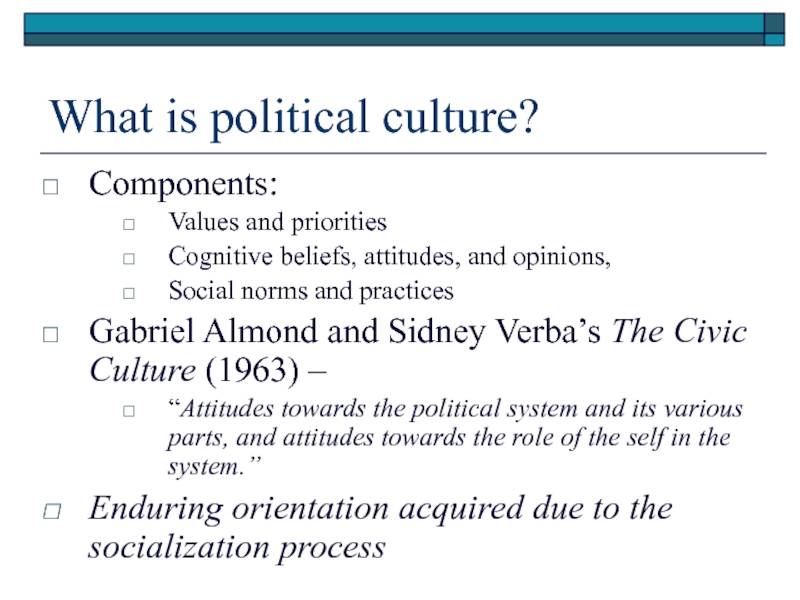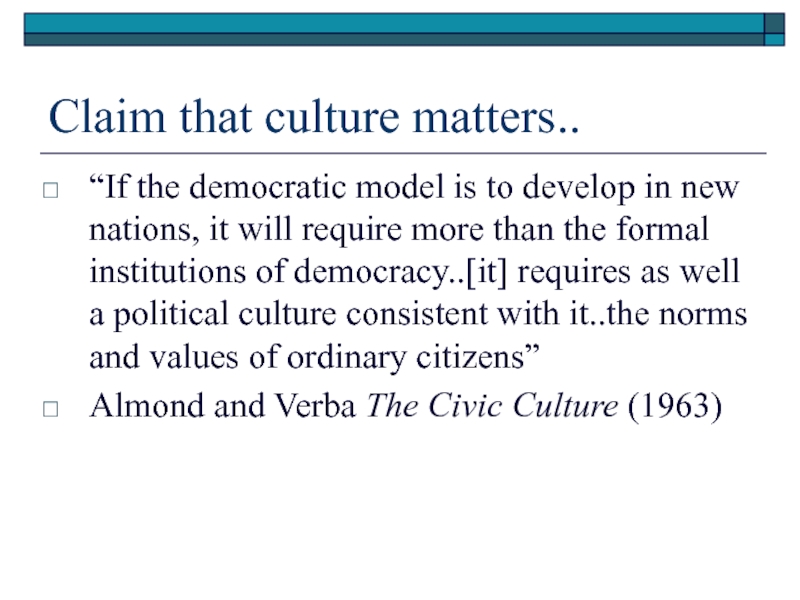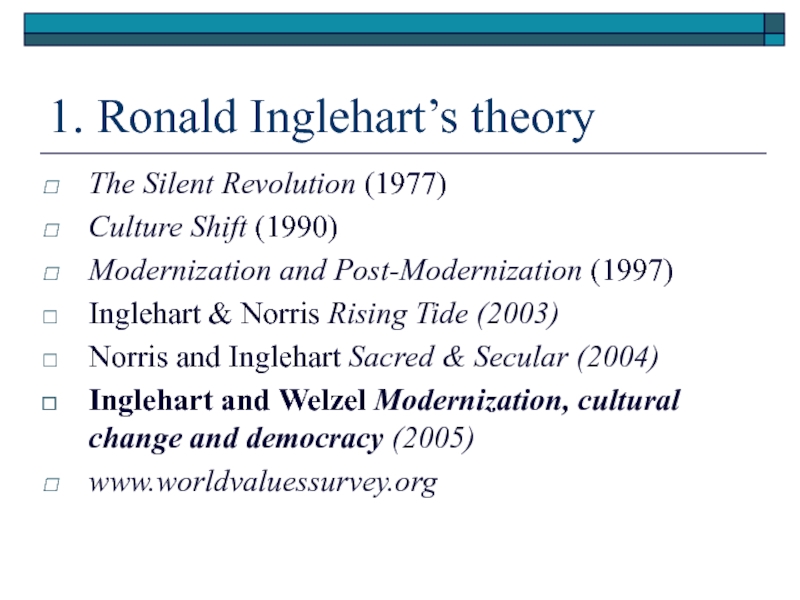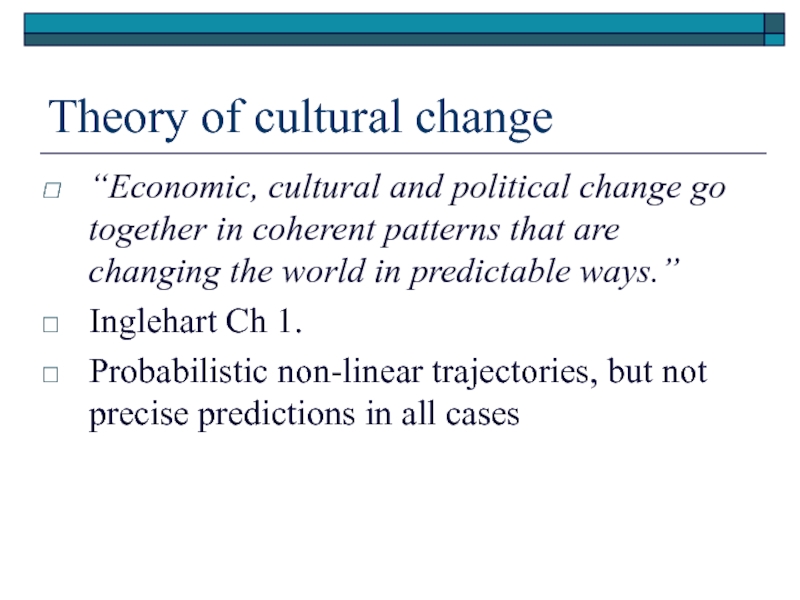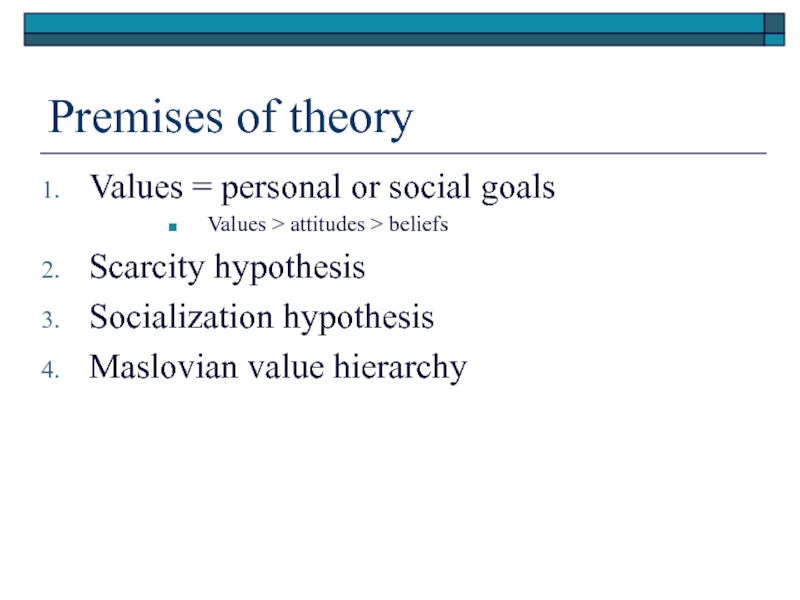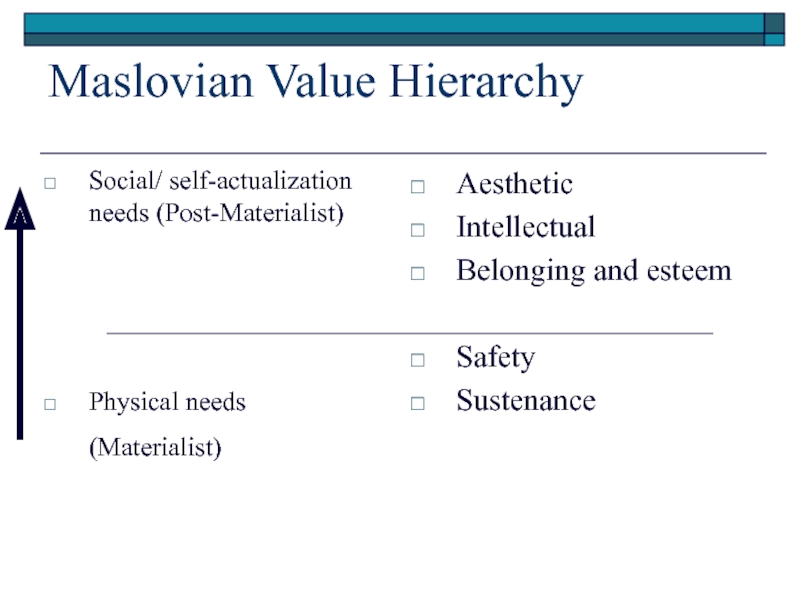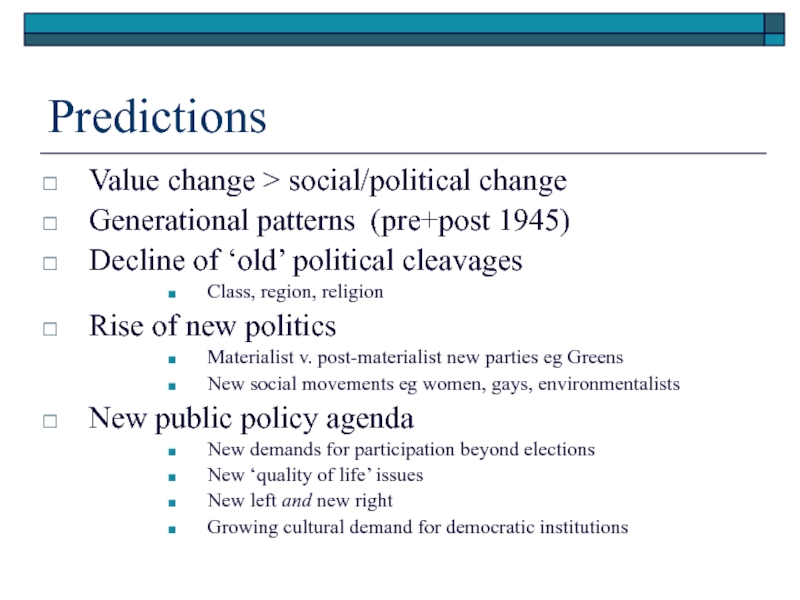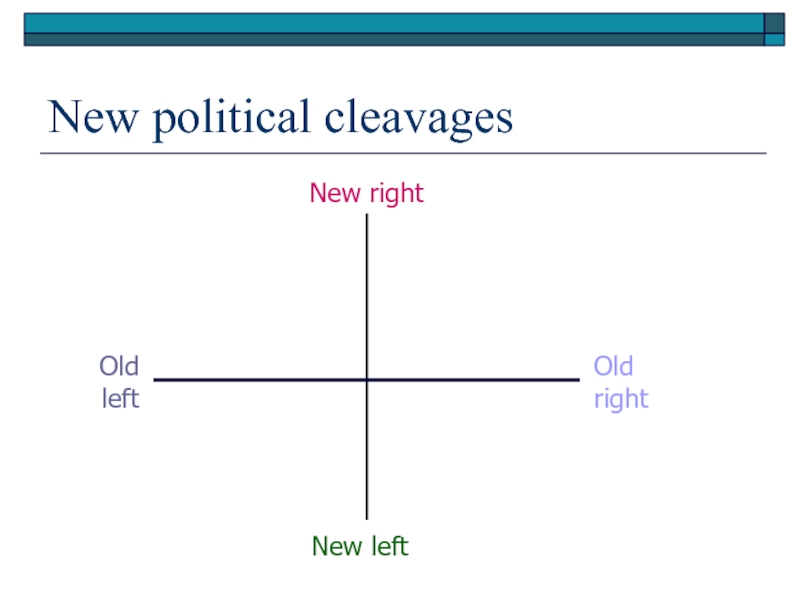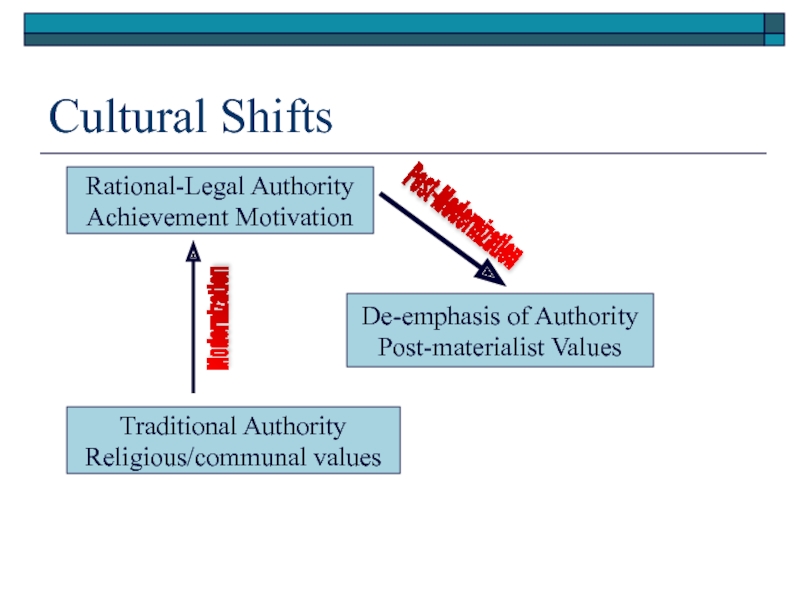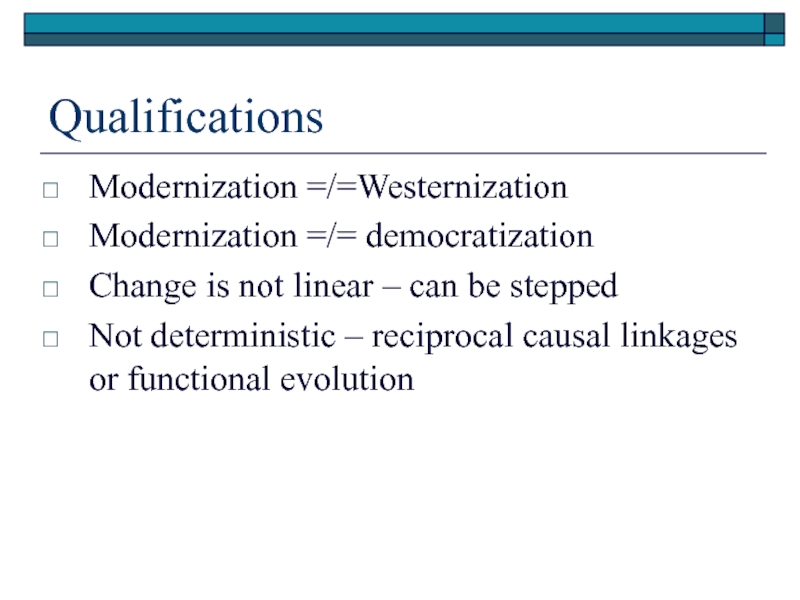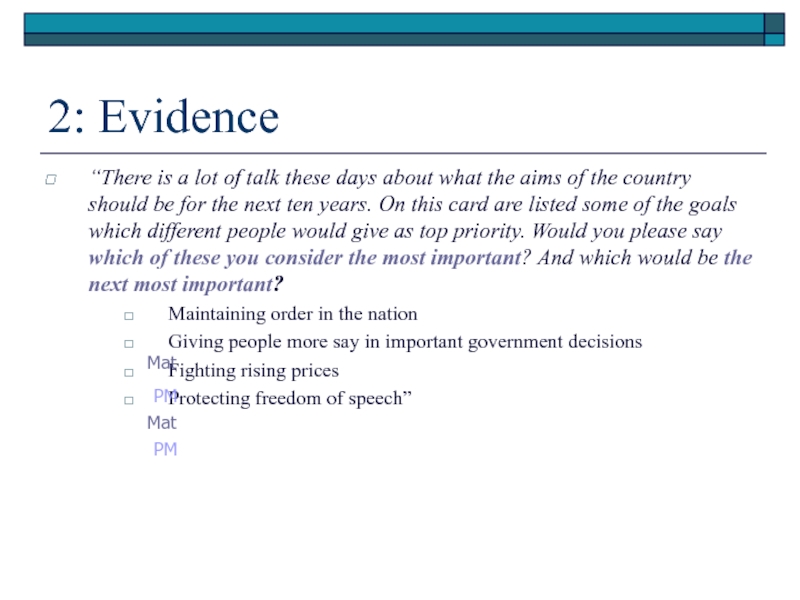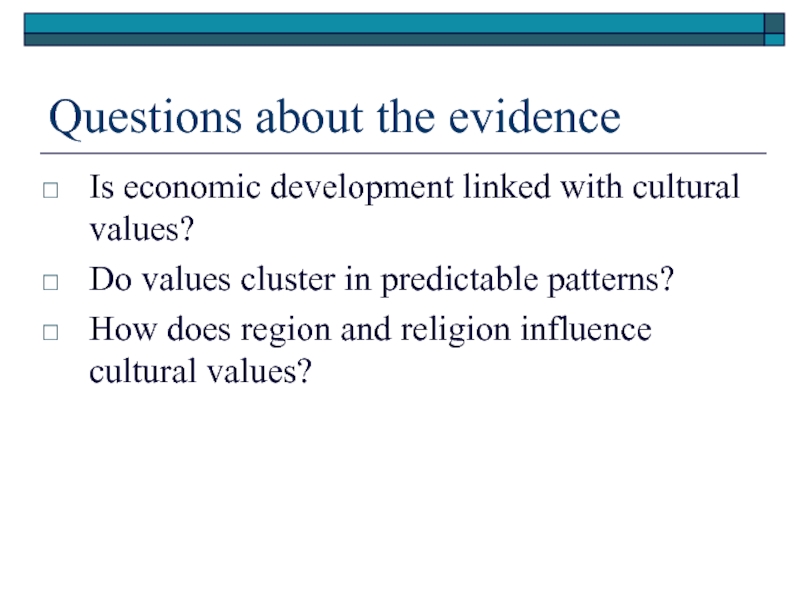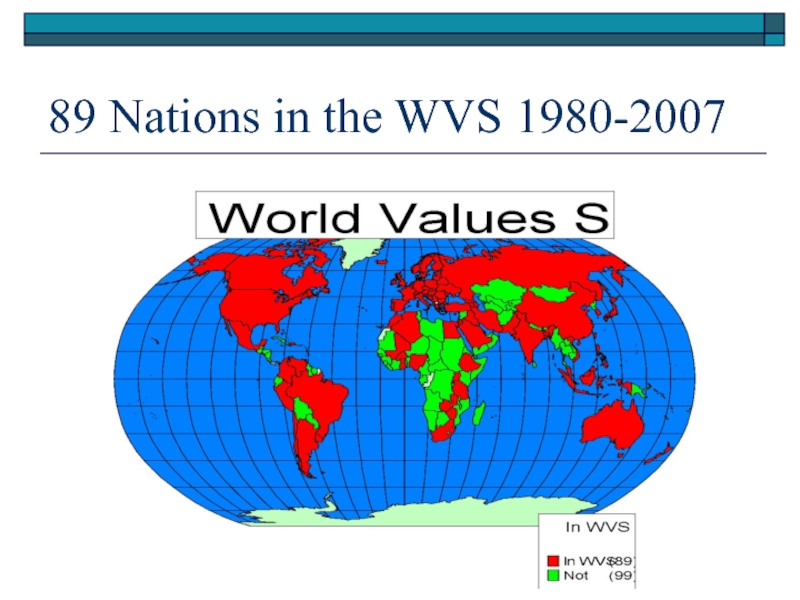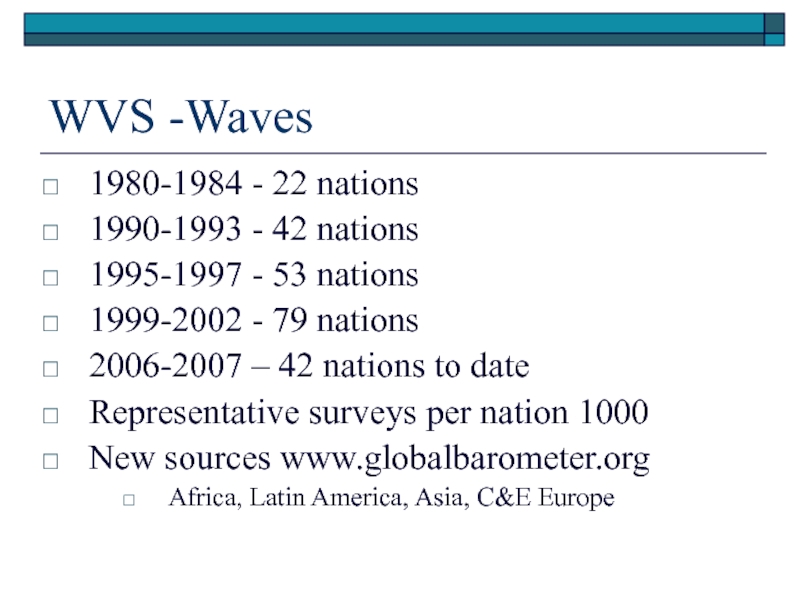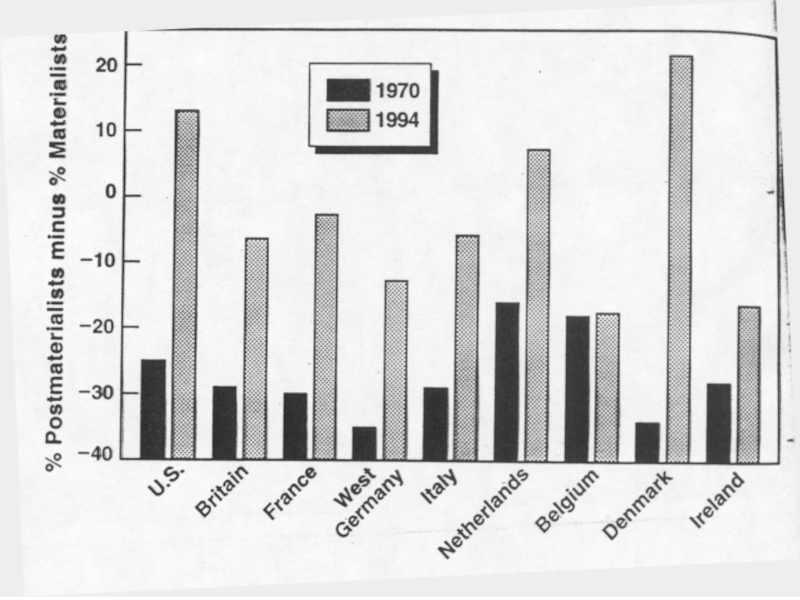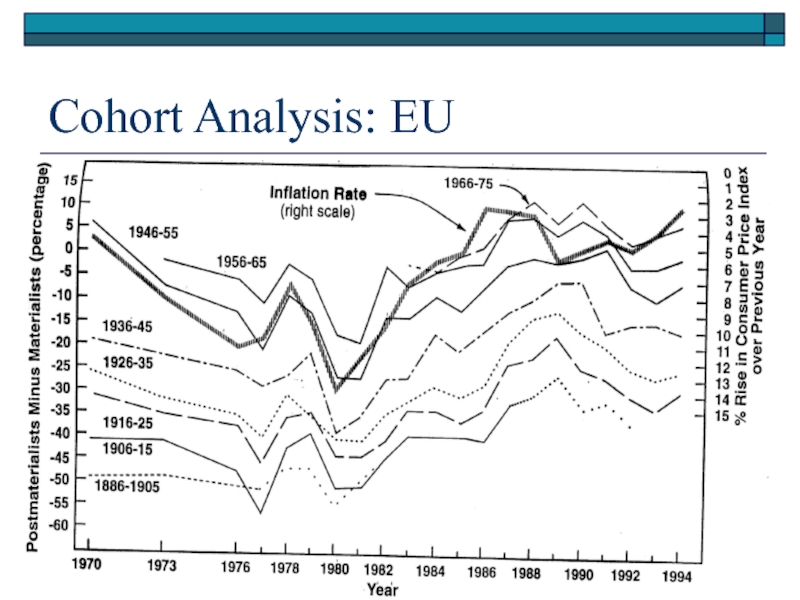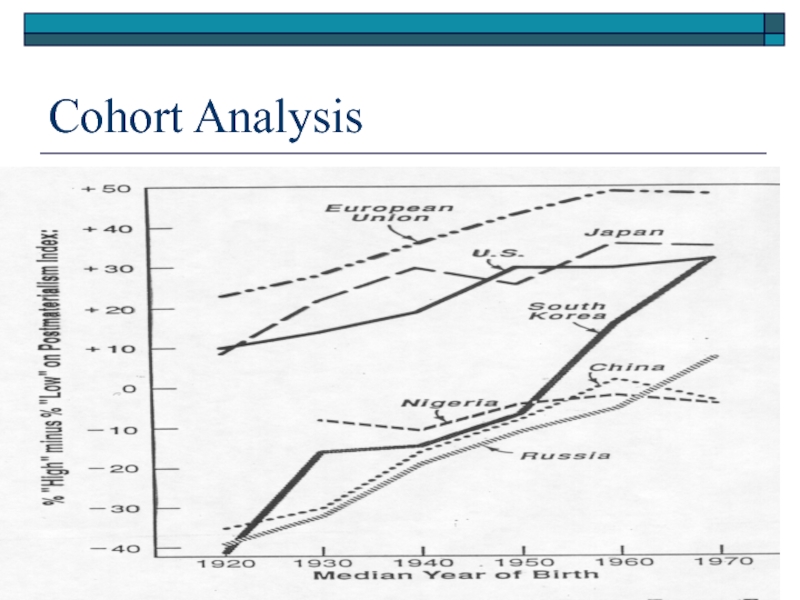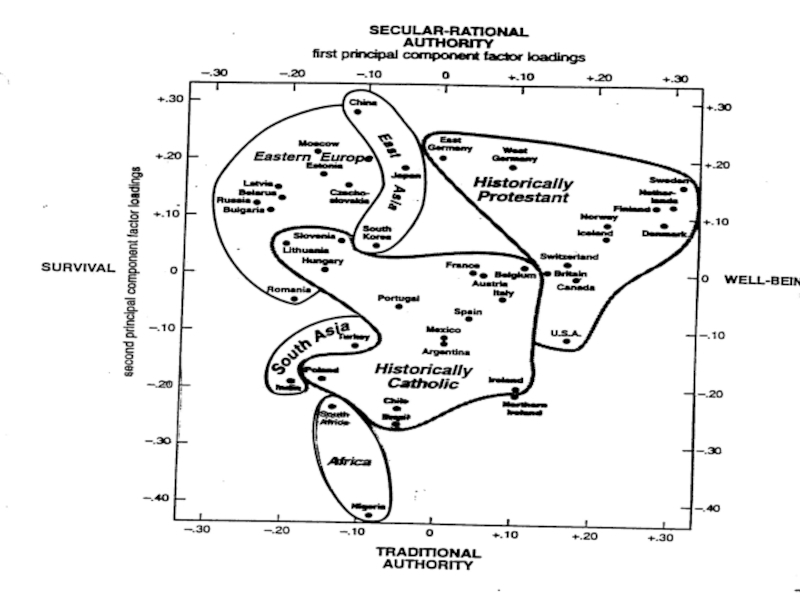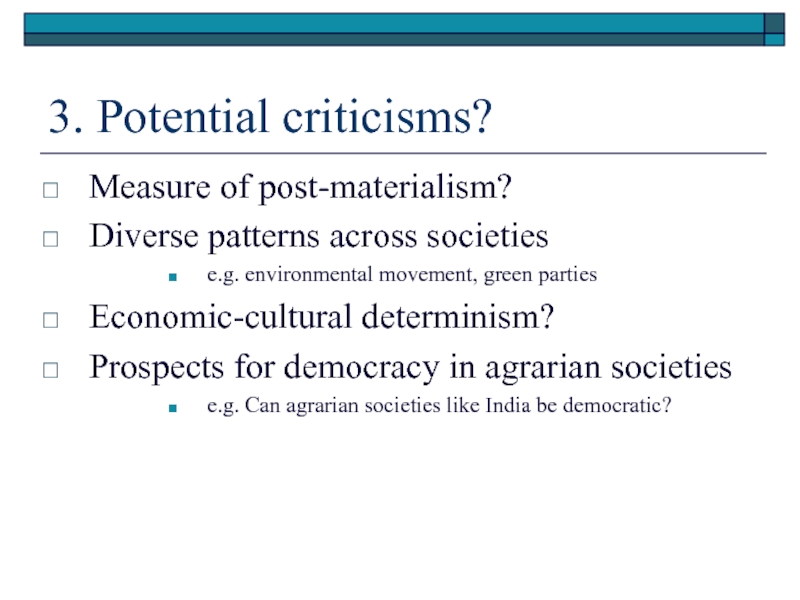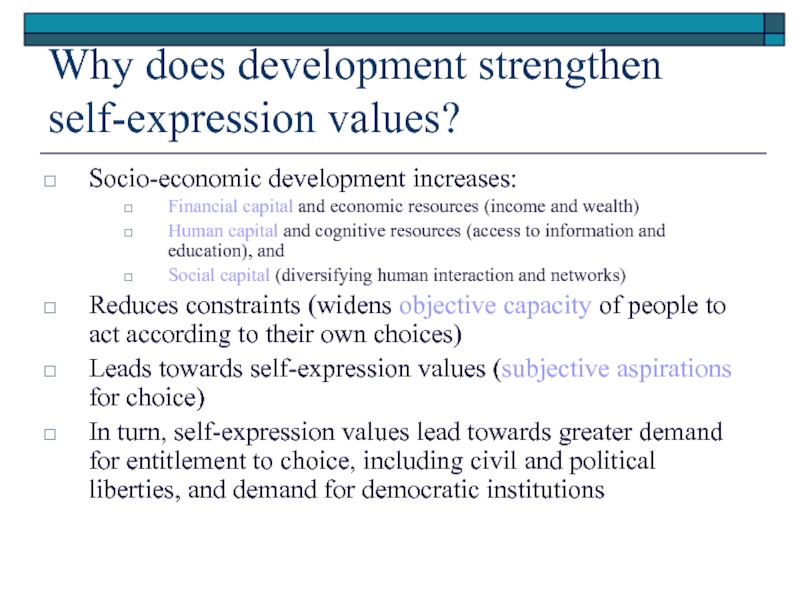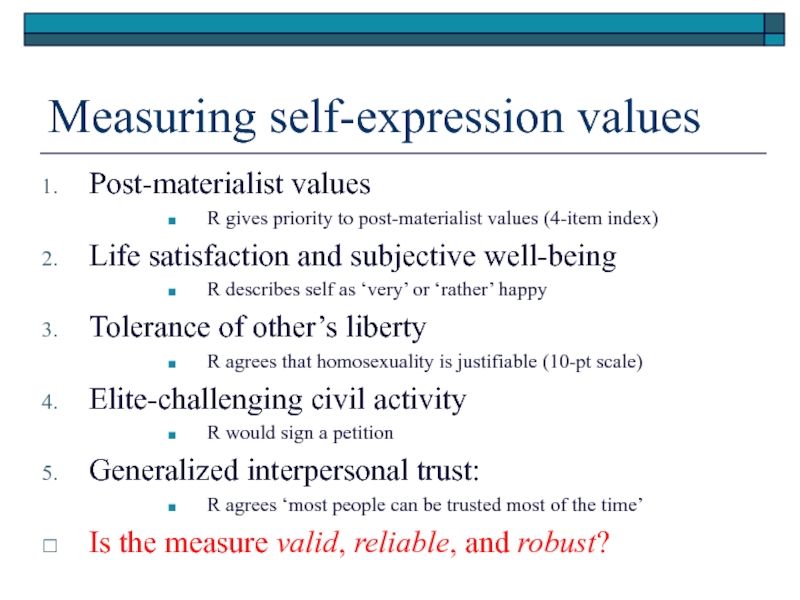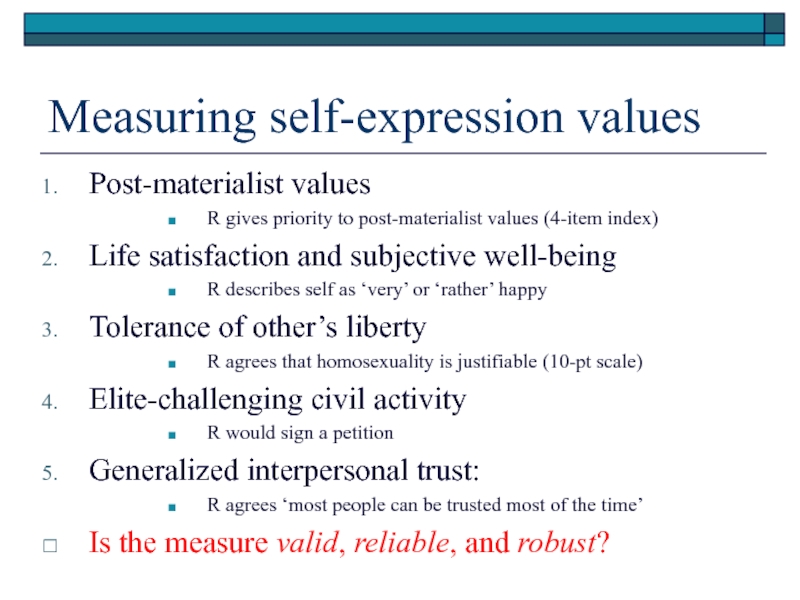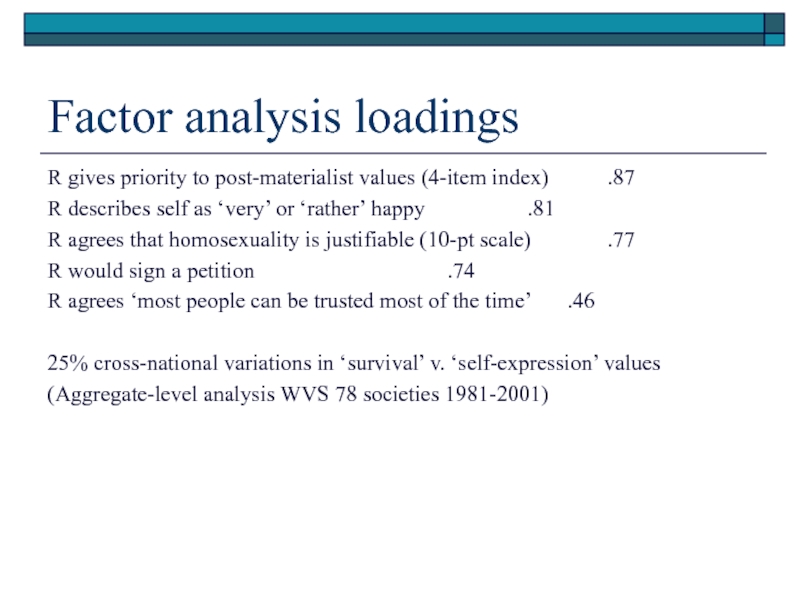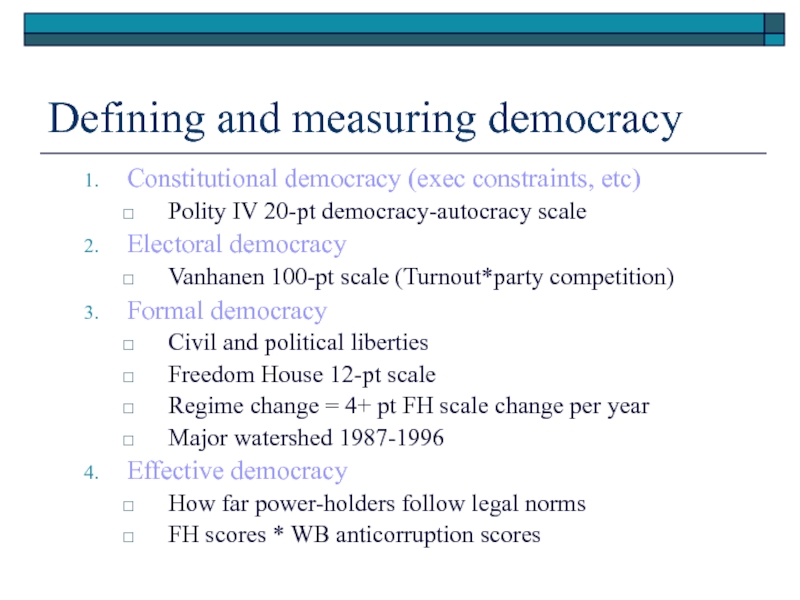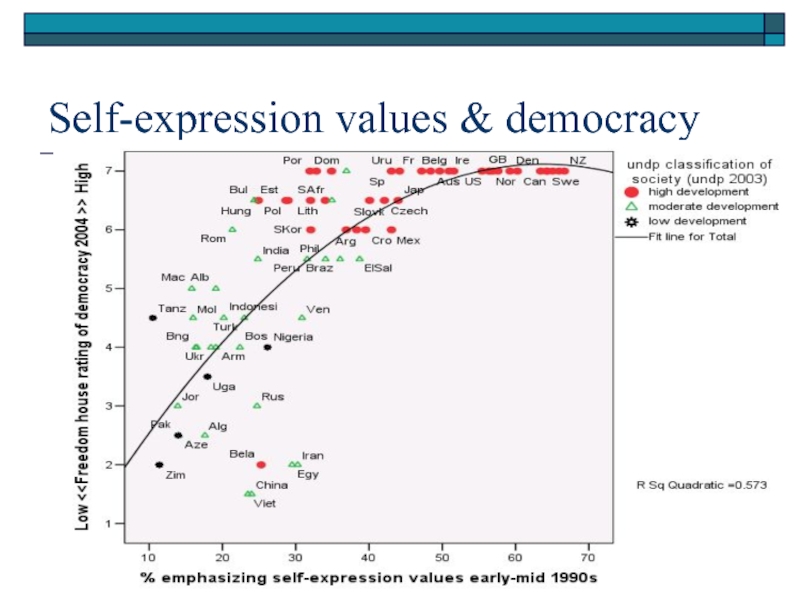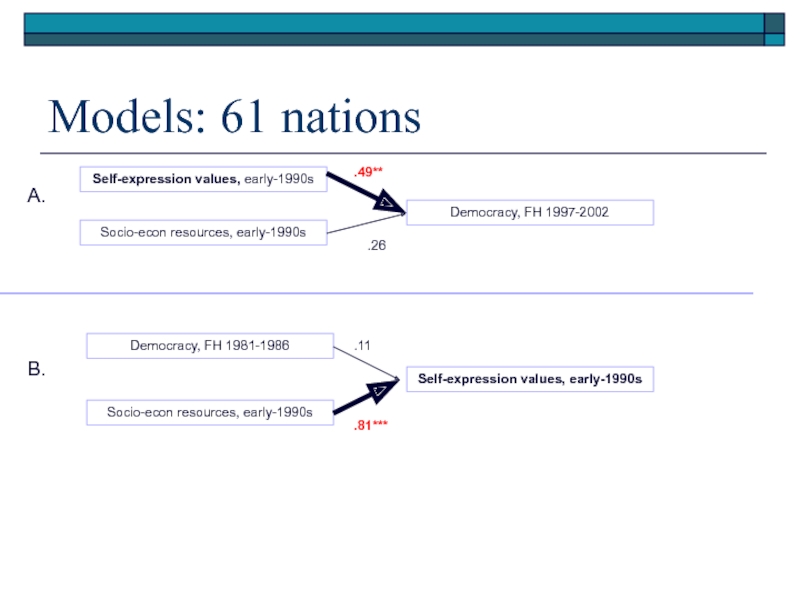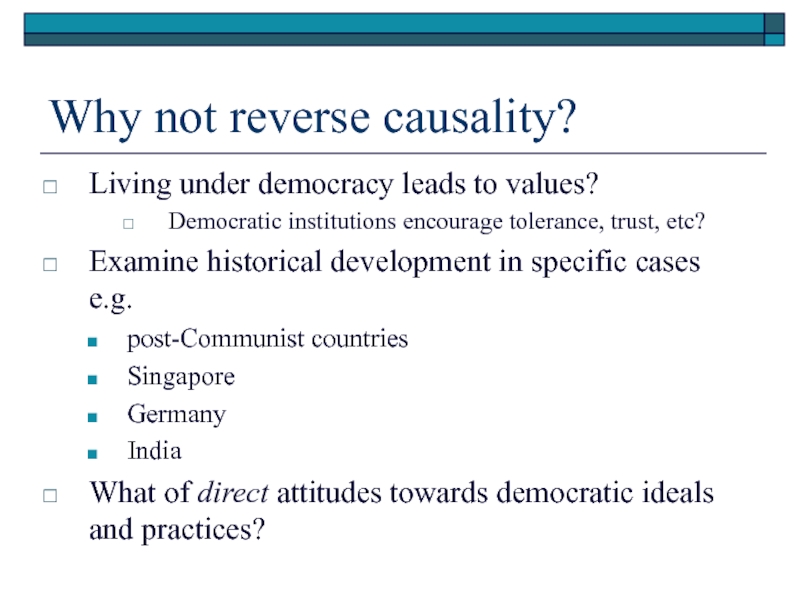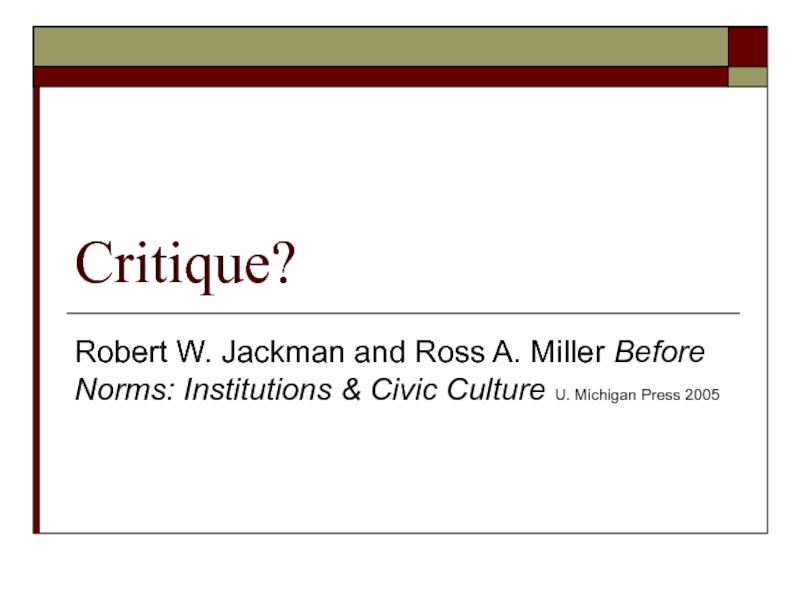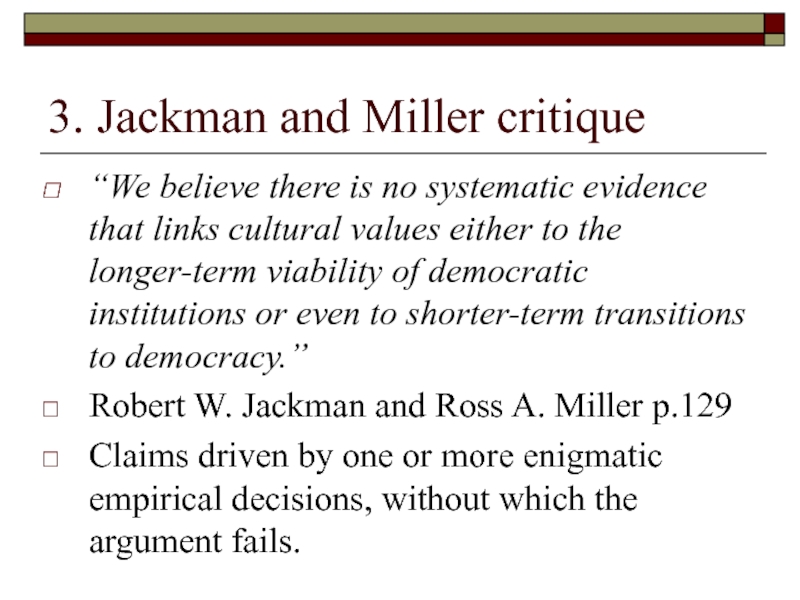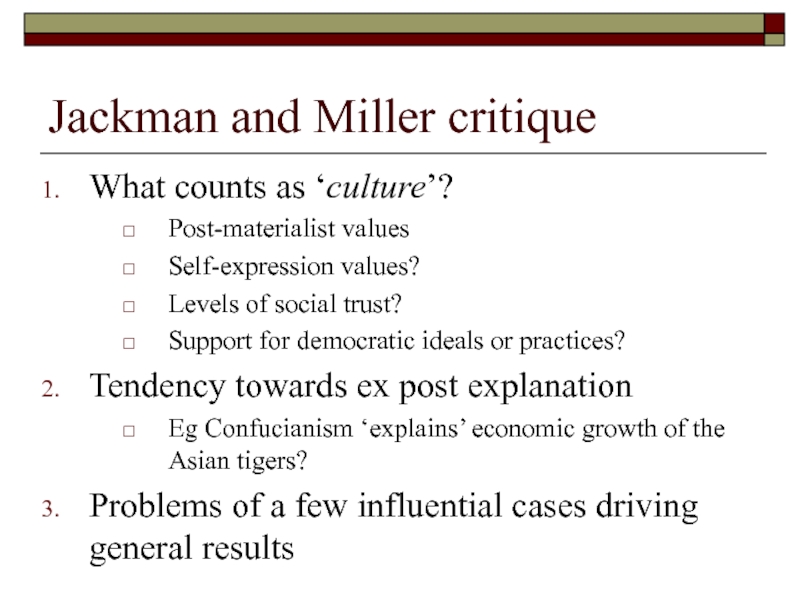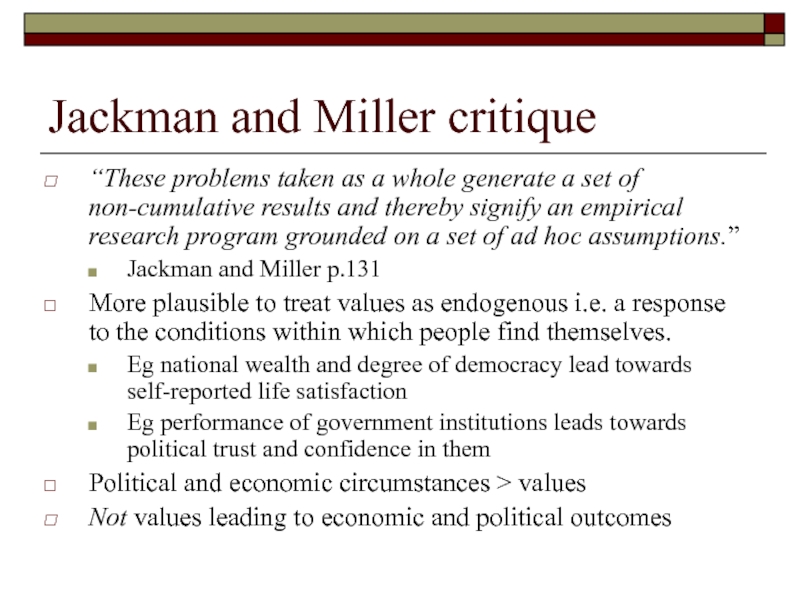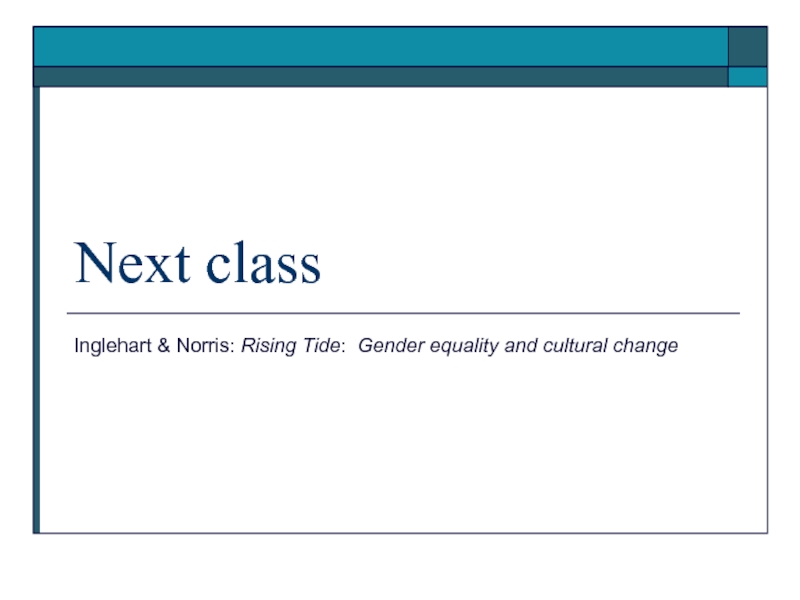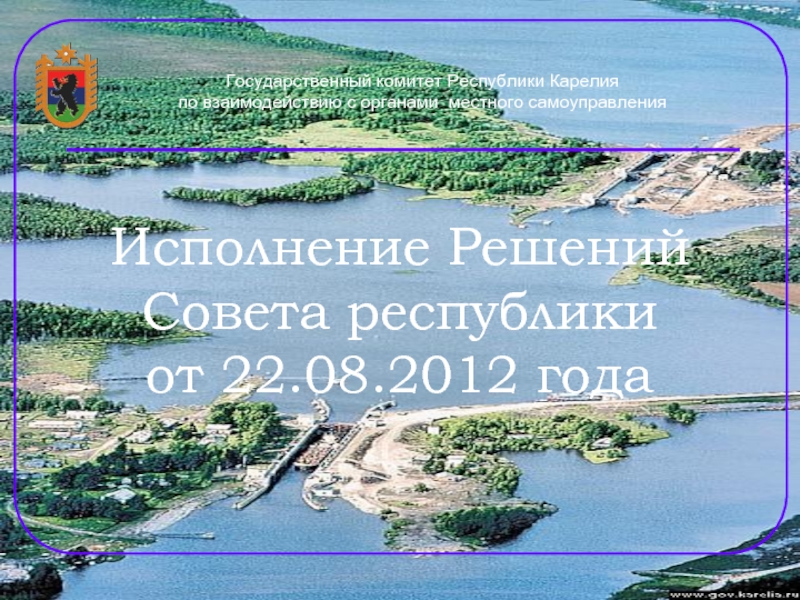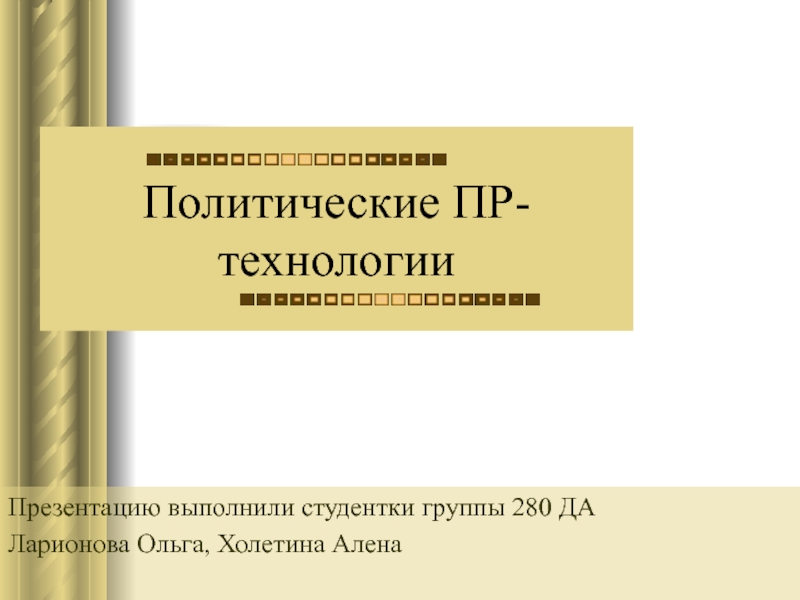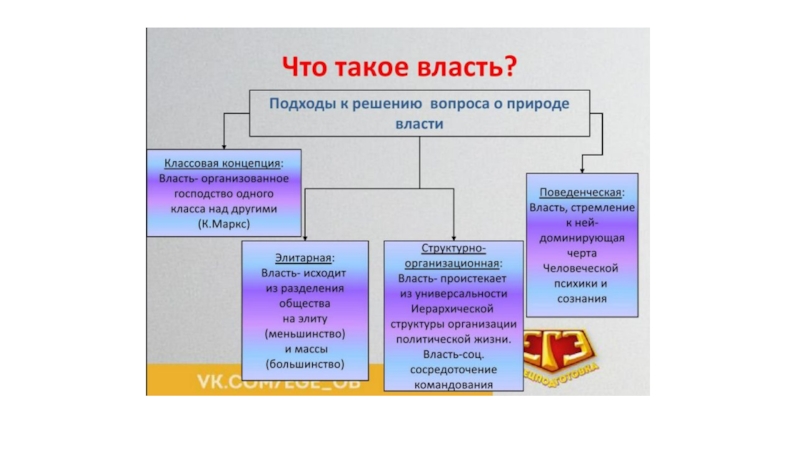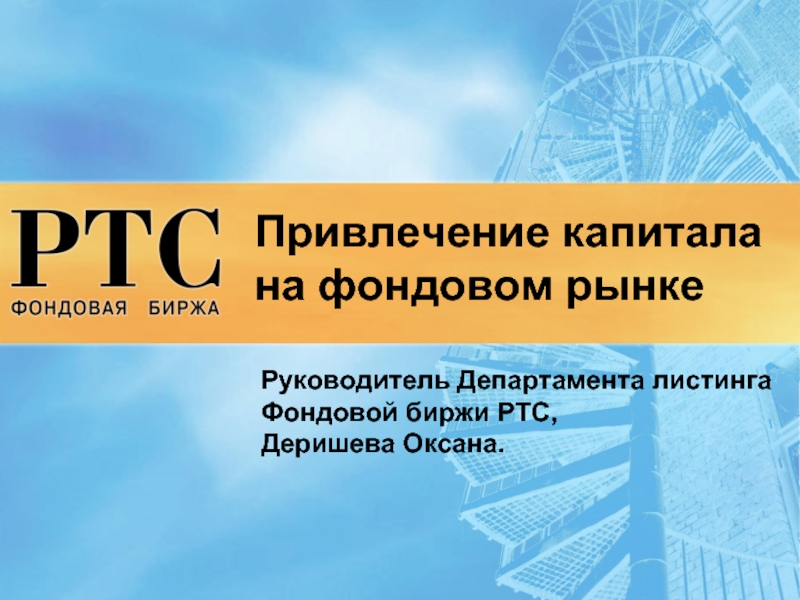- Главная
- Разное
- Дизайн
- Бизнес и предпринимательство
- Аналитика
- Образование
- Развлечения
- Красота и здоровье
- Финансы
- Государство
- Путешествия
- Спорт
- Недвижимость
- Армия
- Графика
- Культурология
- Еда и кулинария
- Лингвистика
- Английский язык
- Астрономия
- Алгебра
- Биология
- География
- Детские презентации
- Информатика
- История
- Литература
- Маркетинг
- Математика
- Медицина
- Менеджмент
- Музыка
- МХК
- Немецкий язык
- ОБЖ
- Обществознание
- Окружающий мир
- Педагогика
- Русский язык
- Технология
- Физика
- Философия
- Химия
- Шаблоны, картинки для презентаций
- Экология
- Экономика
- Юриспруденция
Comparing political culture. Inglehart’s Theory of Value Change and Support for Democracy презентация
Содержание
- 1. Comparing political culture. Inglehart’s Theory of Value Change and Support for Democracy
- 2. Class Structure What is ‘political culture’ and
- 3. What is political culture? Components: Values and
- 4. Claim that culture matters.. “If the democratic
- 5. 1. Ronald Inglehart’s theory The Silent Revolution
- 6. Theory of cultural change “Economic, cultural and
- 7. Premises of theory Values = personal or
- 8. Maslovian Value Hierarchy Social/ self-actualization needs (Post-Materialist)
- 9. Predictions Value change > social/political change
- 10. New political cleavages Old right Old left New left New right
- 11. Cultural Shifts Rational-Legal Authority Achievement Motivation
- 12. Process of social change Agrarian to modern
- 13. Qualifications Modernization =/=Westernization Modernization =/= democratization Change
- 14. 2: Evidence “There is a lot of
- 15. Questions about the evidence Is economic development
- 16. 89 Nations in the WVS 1980-2007
- 17. WVS -Waves 1980-1984 - 22 nations 1990-1993
- 19. Cohort Analysis: EU
- 20. Cohort Analysis
- 22. 3. Potential criticisms? Measure of post-materialism? Diverse
- 23. 4. Implications for democratic support Inglehart and
- 24. Why does development strengthen self-expression values? Socio-economic
- 25. Measuring self-expression values Post-materialist values R gives
- 26. Measuring self-expression values Post-materialist values R gives
- 27. Factor analysis loadings R gives priority to
- 28. Defining and measuring democracy Constitutional democracy (exec
- 29. Direction of causality? Impact of values (X)
- 30. Self-expression values & democracy
- 31. Models: 61 nations Self-expression values, early-1990s Socio-econ
- 32. Why not reverse causality? Living under democracy
- 33. Critique? Robert W. Jackman and Ross A.
- 34. 3. Jackman and Miller critique “We believe
- 35. Jackman and Miller critique What counts as
- 36. Jackman and Miller critique “These problems taken
- 37. Next class Inglehart & Norris: Rising Tide: Gender equality and cultural change
Слайд 2Class Structure
What is ‘political culture’ and what is Inglehart’s theory of
What evidence supports the general theory?
Potential criticisms of Inglehart?
What are the consequences for support for democracy and democratization?
Слайд 3What is political culture?
Components:
Values and priorities
Cognitive beliefs, attitudes, and opinions,
Social norms and practices
Gabriel Almond and Sidney Verba’s The Civic Culture (1963) –
“Attitudes towards the political system and its various parts, and attitudes towards the role of the self in the system.”
Enduring orientation acquired due to the socialization process
Слайд 4Claim that culture matters..
“If the democratic model is to develop in
Almond and Verba The Civic Culture (1963)
Слайд 51. Ronald Inglehart’s theory
The Silent Revolution (1977)
Culture Shift (1990)
Modernization and Post-Modernization
Inglehart & Norris Rising Tide (2003)
Norris and Inglehart Sacred & Secular (2004)
Inglehart and Welzel Modernization, cultural change and democracy (2005)
www.worldvaluessurvey.org
Слайд 6Theory of cultural change
“Economic, cultural and political change go together in
Inglehart Ch 1.
Probabilistic non-linear trajectories, but not precise predictions in all cases
Слайд 7Premises of theory
Values = personal or social goals
Values > attitudes >
Scarcity hypothesis
Socialization hypothesis
Maslovian value hierarchy
Слайд 8Maslovian Value Hierarchy
Social/ self-actualization needs (Post-Materialist)
Physical needs (Materialist)
Aesthetic
Intellectual
Belonging and esteem
Safety
Sustenance
Слайд 9Predictions
Value change > social/political change
Generational patterns (pre+post 1945)
Decline of ‘old’
Class, region, religion
Rise of new politics
Materialist v. post-materialist new parties eg Greens
New social movements eg women, gays, environmentalists
New public policy agenda
New demands for participation beyond elections
New ‘quality of life’ issues
New left and new right
Growing cultural demand for democratic institutions
Слайд 11Cultural Shifts
Rational-Legal Authority
Achievement Motivation
Traditional Authority
Religious/communal values
De-emphasis of Authority
Post-materialist Values
Post-Modernization
Modernization
Слайд 12Process of social change
Agrarian to modern
From agriculture to heavy industry
Rural to
Division church and state
Mass education and literacy
Occupational specialization
Working class and urban bourgeoisie, decline of peasants and landed estates
Bureaucratic rational-legal authority, expansion of franchise
Basic welfare state and social protection, education/health
From extended to nuclear families
Entry more women into paid workforce
Modern to Post-modern
Service sector
Urban to suburban
Secularization & scientific authority
Higher education
Flexible careers
From ascribed to achieved status, decline in political salience of class cleavage
Growth of multilayered governance, rise of new participatory demands
Market liberalization and contracting out of social protection functions
Growth non-traditional households
Growing sex equality in the home and workplace
Слайд 13Qualifications
Modernization =/=Westernization
Modernization =/= democratization
Change is not linear – can be stepped
Not
Слайд 142: Evidence
“There is a lot of talk these days about what
Maintaining order in the nation
Giving people more say in important government decisions
Fighting rising prices
Protecting freedom of speech”
Mat
Mat
PM
PM
Слайд 15Questions about the evidence
Is economic development linked with cultural values?
Do values
How does region and religion influence cultural values?
Слайд 17WVS -Waves
1980-1984 - 22 nations
1990-1993 - 42 nations
1995-1997 - 53 nations
1999-2002
2006-2007 – 42 nations to date
Representative surveys per nation 1000
New sources www.globalbarometer.org
Africa, Latin America, Asia, C&E Europe
Слайд 223. Potential criticisms?
Measure of post-materialism?
Diverse patterns across societies
e.g. environmental movement,
Economic-cultural determinism?
Prospects for democracy in agrarian societies
e.g. Can agrarian societies like India be democratic?
Слайд 234. Implications for democratic support
Inglehart and Welzel’s theory
Self-expression values influence subsequent
Direct attitudes towards democracy are less important than self-expression values
Слайд 24Why does development strengthen self-expression values?
Socio-economic development increases:
Financial capital and
Human capital and cognitive resources (access to information and education), and
Social capital (diversifying human interaction and networks)
Reduces constraints (widens objective capacity of people to act according to their own choices)
Leads towards self-expression values (subjective aspirations for choice)
In turn, self-expression values lead towards greater demand for entitlement to choice, including civil and political liberties, and demand for democratic institutions
Слайд 25Measuring self-expression values
Post-materialist values
R gives priority to post-materialist values (4-item index)
Life
R describes self as ‘very’ or ‘rather’ happy
Tolerance of other’s liberty
R agrees that homosexuality is justifiable (10-pt scale)
Elite-challenging civil activity
R would sign a petition
Generalized interpersonal trust:
R agrees ‘most people can be trusted most of the time’
Is the measure valid, reliable, and robust?
Слайд 26Measuring self-expression values
Post-materialist values
R gives priority to post-materialist values (4-item index)
Life
R describes self as ‘very’ or ‘rather’ happy
Tolerance of other’s liberty
R agrees that homosexuality is justifiable (10-pt scale)
Elite-challenging civil activity
R would sign a petition
Generalized interpersonal trust:
R agrees ‘most people can be trusted most of the time’
Is the measure valid, reliable, and robust?
Слайд 27Factor analysis loadings
R gives priority to post-materialist values (4-item index)
R describes self as ‘very’ or ‘rather’ happy .81
R agrees that homosexuality is justifiable (10-pt scale) .77
R would sign a petition .74
R agrees ‘most people can be trusted most of the time’ .46
25% cross-national variations in ‘survival’ v. ‘self-expression’ values
(Aggregate-level analysis WVS 78 societies 1981-2001)
Слайд 28Defining and measuring democracy
Constitutional democracy (exec constraints, etc)
Polity IV 20-pt democracy-autocracy
Electoral democracy
Vanhanen 100-pt scale (Turnout*party competition)
Formal democracy
Civil and political liberties
Freedom House 12-pt scale
Regime change = 4+ pt FH scale change per year
Major watershed 1987-1996
Effective democracy
How far power-holders follow legal norms
FH scores * WB anticorruption scores
Слайд 29Direction of causality?
Impact of values (X) on democracy (Y)
Test for:
Temporal
X t1 leads to Y t2…
Spuriousness
Control for Z (economic development)
Autocorrelations
Measure of Y t1 leads to Y t2
Слайд 31Models: 61 nations
Self-expression values, early-1990s
Socio-econ resources, early-1990s
Democracy, FH 1997-2002
Democracy, FH 1981-1986
Self-expression
Socio-econ resources, early-1990s
.49**
.81***
A.
B.
.26
.11
Слайд 32Why not reverse causality?
Living under democracy leads to values?
Democratic institutions encourage
Examine historical development in specific cases e.g.
post-Communist countries
Singapore
Germany
India
What of direct attitudes towards democratic ideals and practices?
Слайд 33Critique?
Robert W. Jackman and Ross A. Miller Before Norms: Institutions &
Слайд 343. Jackman and Miller critique
“We believe there is no systematic evidence
Robert W. Jackman and Ross A. Miller p.129
Claims driven by one or more enigmatic empirical decisions, without which the argument fails.
Слайд 35Jackman and Miller critique
What counts as ‘culture’?
Post-materialist values
Self-expression values?
Levels of social
Support for democratic ideals or practices?
Tendency towards ex post explanation
Eg Confucianism ‘explains’ economic growth of the Asian tigers?
Problems of a few influential cases driving general results
Слайд 36Jackman and Miller critique
“These problems taken as a whole generate a
Jackman and Miller p.131
More plausible to treat values as endogenous i.e. a response to the conditions within which people find themselves.
Eg national wealth and degree of democracy lead towards self-reported life satisfaction
Eg performance of government institutions leads towards political trust and confidence in them
Political and economic circumstances > values
Not values leading to economic and political outcomes
